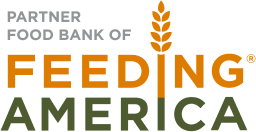By Amber Wright, Development and Marketing Coordinator March is National Nutrition month, a topic intertwined with much of our work at …
Blog
By Mary Beringer, Grant Coordinator It’s been said that the quickest way to a person’s heart is through their stomach, …
The 2023 Year in Review
By Amber Wright, Development and Marketing Coordinator The holidays are over, the ball has dropped, and we have entered a brand-new …
By Jerry Woods, SNAP Outreach Coordinator Poverty and food insecurity are associated with some of the most serious and costly health problems …
By Mary Beringer, Grant Coordinator In 2020, the Coronavirus pandemic put an enormous financial stress on people around the world. Hospitals were …
How and why we are prepared to respond when the worst happens By Mary Beringer, Grant Coordinator Ever since our inception …
By Amber Wright, Development and Marketing Coordinator With the recent observance of Grandparents Day, we are reminded of the invaluable role …
By Mary Evans, EDI & Re Entry Manager Over the past few years, the nation has faced a perfect storm of conditions …








